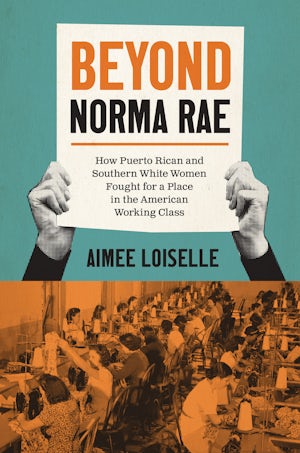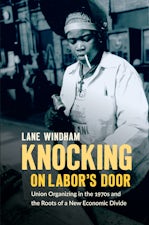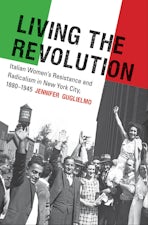Beyond Norma Rae
How Puerto Rican and Southern White Women Fought for a Place in the American Working Class
By Aimee Loiselle
320 pp., 6.125 x 9.25, 31 halftones, 2 tables, notes, bibl., index
-
Paperback ISBN: 978-1-4696-7613-5
Published: November 2023 -
Hardcover ISBN: 978-1-4696-7612-8
Published: November 2023 -
E-book EPUB ISBN: 978-1-4696-7614-2
Published: November 2023
Gender and American Culture
Buy this Book
- Paperback $29.95
- Hardcover $99.00
- E-Book $22.99
For Professors:
Free E-Exam Copies
While Norma Rae constructed a powerful image of individual defiance by a white working-class woman, Loiselle demonstrates that female industrial workers across the country and from diverse racial backgrounds understood the significance of cultural representation and fought to tell their own stories. Loiselle painstakingly reconstructs the underlying histories of working women in this era and makes clear that cultural depictions must be understood as the complicated creations they are.
About the Author
Aimee Loiselle is assistant professor of history at Central Connecticut State University.
For more information about Aimee Loiselle, visit
the
Author
Page.
Reviews
"A deft analysis of the ways in which race, gender, and immigration status determine how media has portrayed the labor movement. Recommended for readers interested in labor history and popular media."—Library Journal
"Hollywood stands exposed as just another industry in Aimee Loiselle's fascinating history of how a long-fought union drive turned into the lone heroine Norma Rae. Theoretically sophisticated and empirically rich, exploring neoliberalism as both affect and structure, accounting for shifts in the global political economy, and recovering the experiences of Puerto Rican needleworkers along with southern millhands, this tour de force redefines who is the American working class. Cultural history will never be the same!"—Eileen Boris, author of Making the Woman Worker: Precarious Labor and the Fight for Global Standards, 1919–2019
"Weaving together histories of capitalism, labor, and cultural production, Loiselle takes readers on a wide-ranging journey, from the textile and garment industries in Puerto Rico and the US South to picket lines, union halls, and Hollywood offices, where executives made consequential decisions about how to represent the American working class. In looking to the film representation of Norma Rae, Loiselle reveals that well-funded culture producers left audiences with a hollowed-out symbol of neoliberal individualism rather than the global working class fighting for collective rights. Loiselle reminds us that even our most beloved icons are complex historical and ideological constructions."—Jessica Wilkerson, author of To Live Here, You Have to Fight: How Women Led Appalachian Movements for Social Justice
"This superb book places working-class women at the center of gender and labor history. Loiselle provides fresh analysis of a fascinating body of sources, revealing a striking story of the workers too often left out of mainstream narratives and shedding new light on the production of history as contested terrain."—Emma Amador, University of Connecticut



